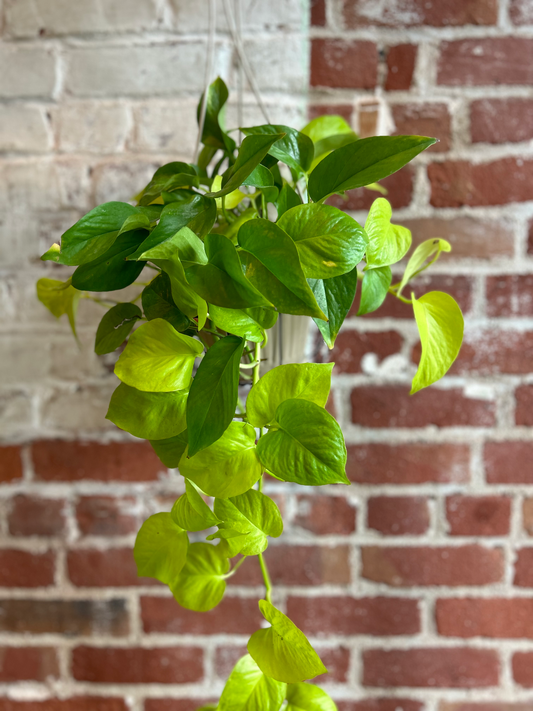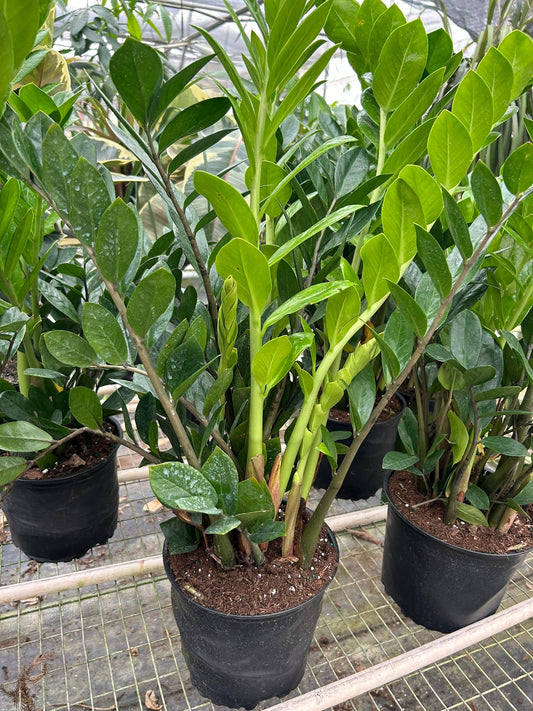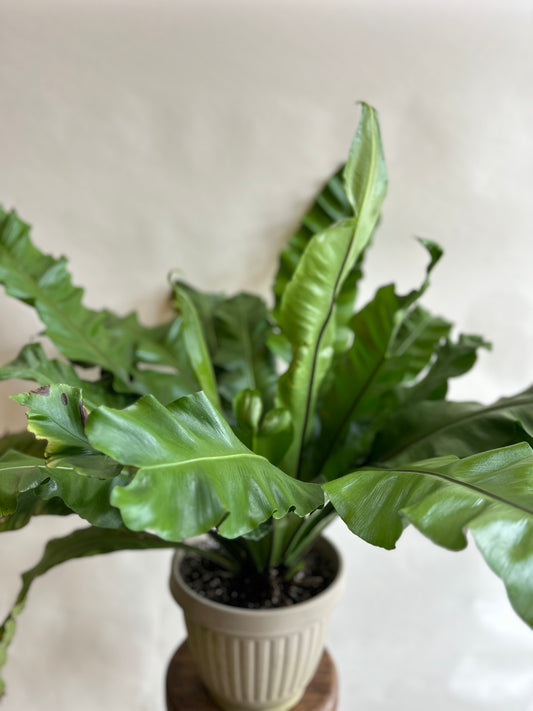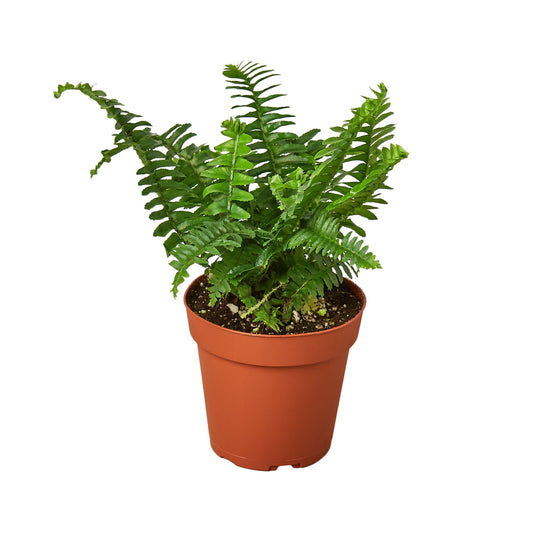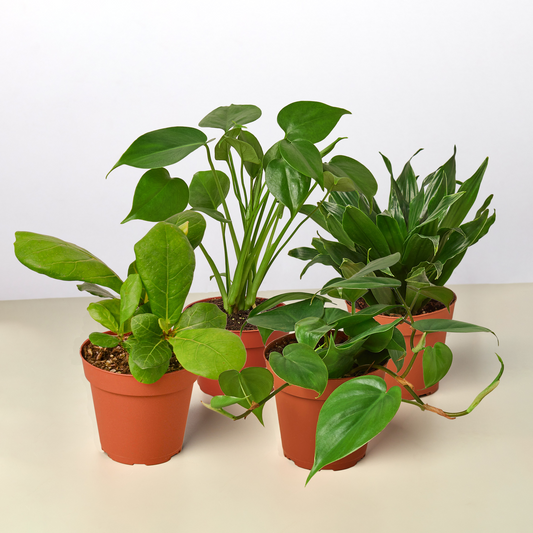How to Grow and Care for Living Stones
Cafe Planta Team
Growing and caring for living stones, also known as Lithops, can be an intriguing journey for anyone with a green thumb. These unique plants are not only a conversation starter but also a fantastic addition to any indoor garden. Their stone-like appearance is both fascinating and deceptive, making them a perfect choice for those looking to add some quirky charm to their plant collection.
In this article, we’ll cover everything you need to know about living stones—from selecting the right ones for your home to potting, watering, and creating a beautiful space for them to thrive. Whether you're a seasoned plant parent or just starting out, you'll find helpful tips and tricks to keep these charming plants happy and healthy.
What Are Living Stones?
Living stones, scientifically known as Lithops, are small succulent plants native to southern Africa. They have evolved to resemble the stones and pebbles among which they grow, a clever camouflage that helps them survive in their natural habitat. These plants are part of the Aizoaceae family and are prized for their unique appearance, which can easily be mistaken for a collection of colorful rocks.
Each Lithops plant consists of a pair of thick, fleshy leaves, and it is these leaves that resemble stones. The small gap between the leaves is where the plant's flower will emerge—usually a white or yellow bloom that adds a lovely pop of color. Living stones are known for their ability to store water in their leaves, allowing them to survive long periods of drought.
For many plant lovers, the appeal of Lithops lies in their unusual appearance and the challenge they present in terms of care. While they might not require frequent watering, they do demand attention to detail in terms of light, soil, and temperature.
The Right Environment for Living Stones
Creating the right environment for your living stones is crucial for their growth and longevity. These plants thrive in conditions that mimic their natural habitat, which is generally sunny and dry with well-draining soil.
Light: Living stones need plenty of sunlight to grow. Ideally, place them in a spot where they can receive at least 4 to 5 hours of direct sunlight each day. A south-facing window is often perfect. However, be cautious of intense midday sun, which can scorch the leaves. If you notice the plants stretching or their colors fading, they might need more light.
Temperature: These succulents prefer temperatures ranging from 65°F to 80°F (18°C to 27°C) during the growing season. In winter, when they are dormant, they can tolerate cooler temperatures but should be kept above 50°F (10°C). Avoid placing them near cold drafts or heating vents, as sudden temperature changes can stress the plants.
Humidity: Living stones are not fond of high humidity. Like most succulents, they prefer dry air, so avoid placing them in bathrooms or kitchens where moisture is high. If you live in a humid climate, consider using a dehumidifier or placing the plant in a well-ventilated room.
Choosing the Right Pot and Soil
The pot and soil you choose for your living stones play a significant role in their health and growth. Because these plants are adapted to arid environments, they require specific conditions to thrive.
Pot Selection: A shallow pot with drainage holes is ideal for Lithops. The roots of living stones are relatively shallow, so a deep pot is unnecessary and can even be detrimental as it retains excess moisture. Terracotta pots are a popular choice, as they allow the soil to dry out more quickly, which is essential for preventing root rot.
Soil Mix: A well-draining soil mix is a must for living stones. You can purchase a cactus or succulent mix from a garden center or create your own by combining equal parts of potting soil, coarse sand, and perlite. The goal is to ensure the soil drains quickly and doesn't retain water, mimicking the conditions of their natural environment.
If you're repotting, do so during the plant's dormant period in late winter or early spring. Be gentle when handling the roots, and ensure the soil level in the new pot is the same as it was in the original one.
Watering Living Stones
Watering living stones requires a bit of finesse, as overwatering is one of the most common reasons these plants fail to thrive. Understanding their unique water needs is key to keeping them healthy.
Watering Schedule: These plants have a distinct growth cycle that influences when and how much they should be watered. During their active growing period in the spring and fall, they require more water. A good rule of thumb is to water them only when the soil is completely dry. You can check by inserting a finger into the soil up to the first knuckle—if it feels dry, it's time to water.
In the summer, Lithops enter a dormant phase and require little to no water. Overwatering during this time can lead to root rot, so it's best to err on the side of caution. Similarly, in winter, water sparingly as the plants are not actively growing.
Watering Technique: When you do water your living stones, do so thoroughly but infrequently. Allow the water to soak through the soil and drain out of the pot's holes. Always empty the saucer beneath the pot to prevent the roots from sitting in water. This helps mimic the infrequent but heavy rains that Lithops would experience in the wild.
Feeding and Fertilizing
While living stones are not heavy feeders, providing the right nutrients can support their growth and flowering. However, it's important to avoid over-fertilizing, as this can harm the plant.
When to Fertilize: The best time to fertilize living stones is during their active growing periods in spring and fall. A balanced, water-soluble fertilizer diluted to half strength is usually sufficient. Apply the fertilizer once every six to eight weeks during these periods.
Avoid fertilizing during the summer and winter when the plants are dormant. Over-fertilizing during these times can lead to nutrient build-up in the soil, which can damage the roots.
Fertilizer Type: Choose a fertilizer designed for cacti and succulents, as these will have the appropriate nutrient balance. Look for one with a low nitrogen content, as too much nitrogen can encourage excessive leaf growth at the expense of the plant's natural shape and health.
Dealing with Pests and Diseases
Living stones are generally resistant to many pests and diseases, but they are not entirely immune. Keeping a watchful eye can help you spot and address any issues before they become serious.
Common Pests: The most common pests affecting Lithops are mealybugs and spider mites. Mealybugs are small, white, and fuzzy insects that can often be found in the crevices of the plant. Spider mites are tiny, red or brown, and may create fine webbing on the plant.
To treat these pests, you can remove them manually with a cotton swab dipped in rubbing alcohol. For larger infestations, consider using an insecticidal soap or neem oil. Regularly inspecting your plants can help catch these pests early, making them easier to manage.
Disease Prevention: Overwatering is the primary cause of disease in living stones, leading to root rot. To prevent this, ensure your plants are in well-draining soil and are not watered too frequently. If you notice your Lithops becoming mushy or discolored, root rot may be the culprit. In such cases, remove the affected plant parts and allow the soil to dry out completely before resuming a cautious watering schedule.
Repotting Living Stones
Repotting living stones isn't something you'll need to do often, but when the time comes, it's important to approach it carefully. These plants have relatively slow growth rates and are generally happy in the same pot for several years.
When to Repot: The ideal time for repotting is in late winter or early spring, just before the plant begins its active growth cycle. This timing allows the plant to settle into its new pot before it resumes growing.
How to Repot: Begin by gently removing the plant from its current pot, being careful not to damage the roots. Shake off the old soil and inspect the roots for any signs of rot or damage. Trim away any unhealthy roots with clean scissors.
Place the plant in a new pot with fresh, well-draining soil, making sure the roots are evenly spread. Fill in around the roots with soil, being careful not to bury the plant deeper than it was in its previous pot. Water the plant lightly to help settle the soil, but avoid soaking it.
Creating a Beautiful Space with Living Stones
Living stones can be a unique and eye-catching element in your home decor. Their unusual appearance and vibrant colors make them a perfect candidate for creative plant displays.
Display Ideas: Consider grouping several Lithops together in a shallow dish garden. This not only creates a striking visual effect but also allows you to mimic their natural growing conditions, as they often grow in clusters in the wild. Use decorative stones or gravel as a top dressing to enhance the "stone" effect.
Another idea is to mix Lithops with other succulents that have similar care requirements. This can create a diverse and interesting succulent garden that showcases a range of textures and colors.
Design Considerations: When designing your space, think about the lighting conditions and how they will affect your plants. Choose a location where your living stones will receive adequate sunlight, such as a bright windowsill. You might also consider placing them on a shelf or table where they can be admired up close.
Propagating Living Stones
Propagating living stones can be a rewarding endeavor, but it does require patience and attention to detail. These plants are typically propagated from seeds, as dividing mature plants can be challenging.
Growing from Seed: To propagate Lithops from seeds, start by choosing a shallow tray or pot with good drainage. Fill it with a well-draining soil mix, and moisten the soil lightly before sowing the seeds. Scatter the seeds on the soil surface, pressing them down gently without covering them, as they need light to germinate.
Place the pot in a warm, bright location, and keep the soil consistently moist but not soggy. It's important to provide high humidity during germination, so consider covering the pot with a clear plastic lid or plastic wrap. Germination can take several weeks, and patience is key.
Care of Seedlings: Once the seeds have germinated and the seedlings are established, begin to gradually acclimate them to lower humidity and more direct light. This process can take several months. Water the seedlings sparingly, allowing the soil to dry between waterings.
Final Thoughts
Living stones are a unique and intriguing addition to any plant collection. From choosing the right environment and soil to understanding their watering needs and creating stunning displays, these plants offer a satisfying challenge for plant lovers of all levels.
At Cafe Planta, we love sharing our passion for plants with you. Whether you're just starting your plant journey or looking to expand your collection, we're here to help. Feel free to reach out to us via email or connect with us on Instagram. Let's grow together!


